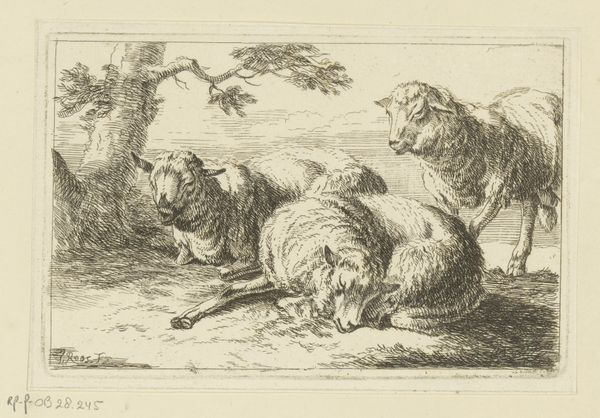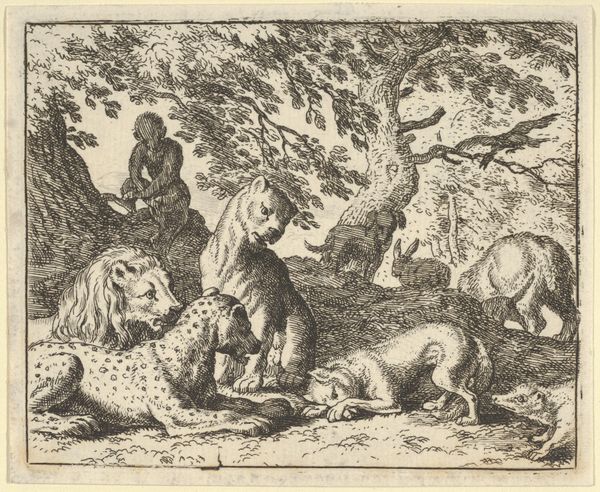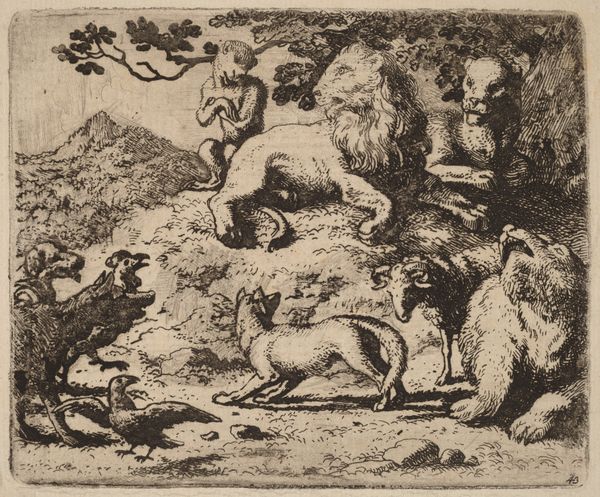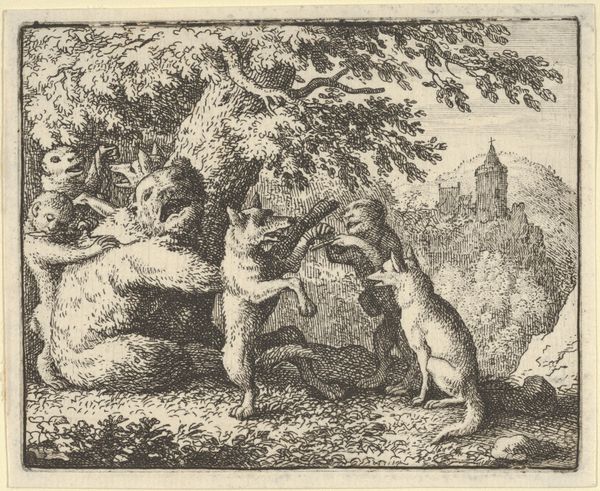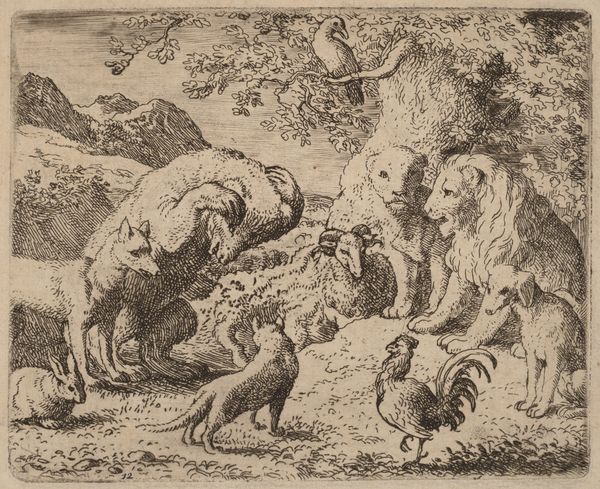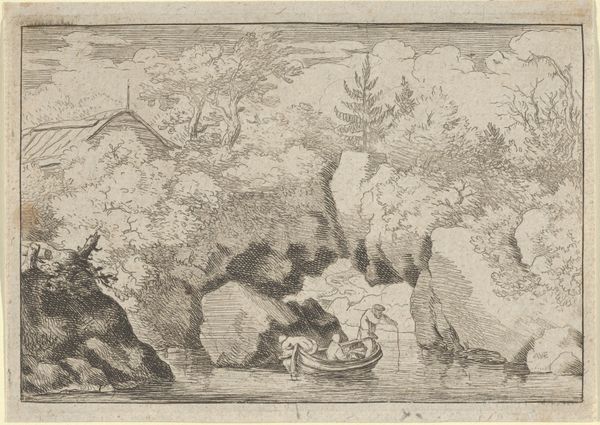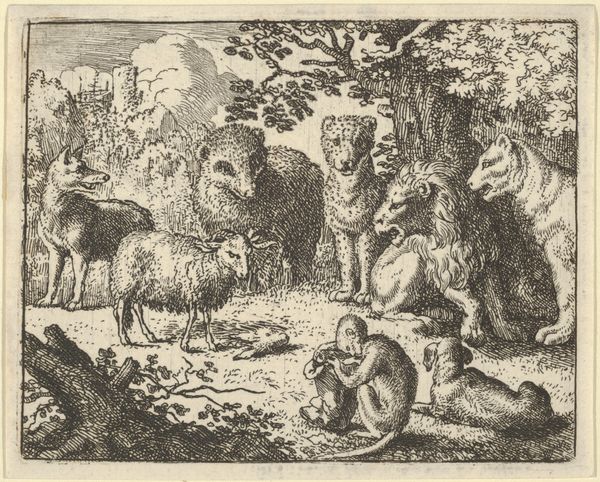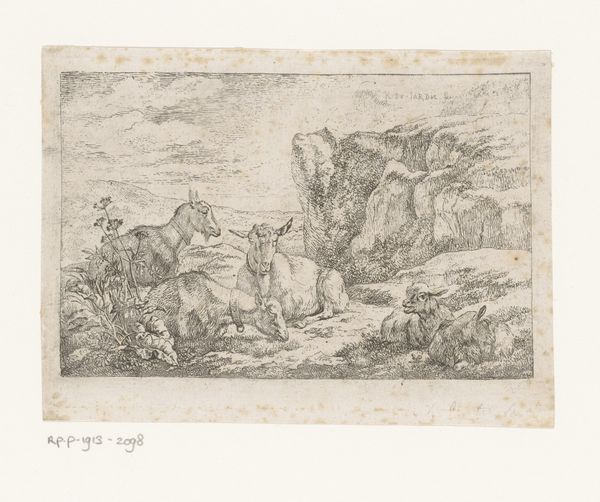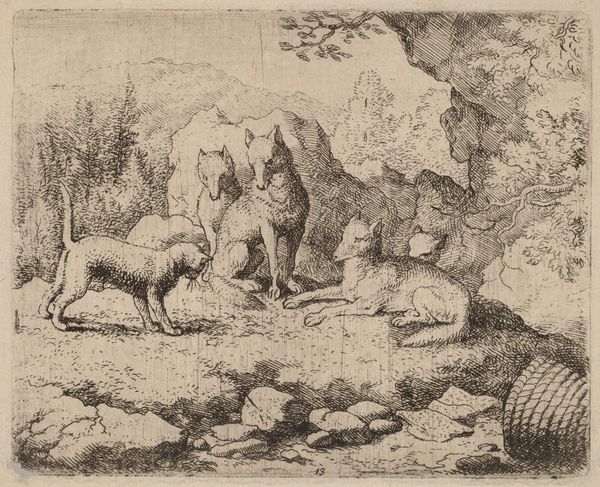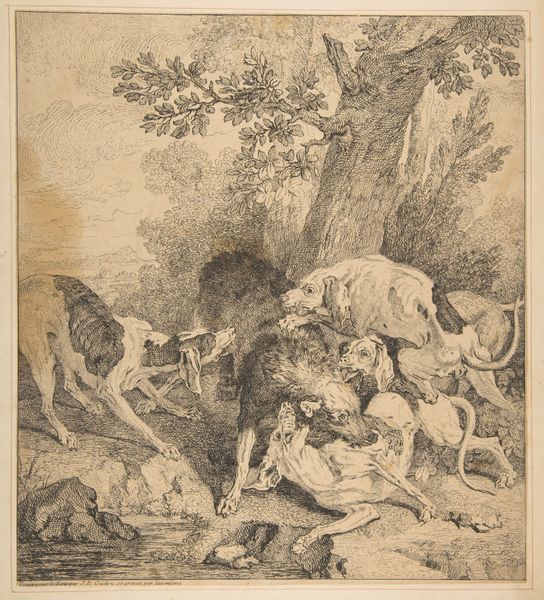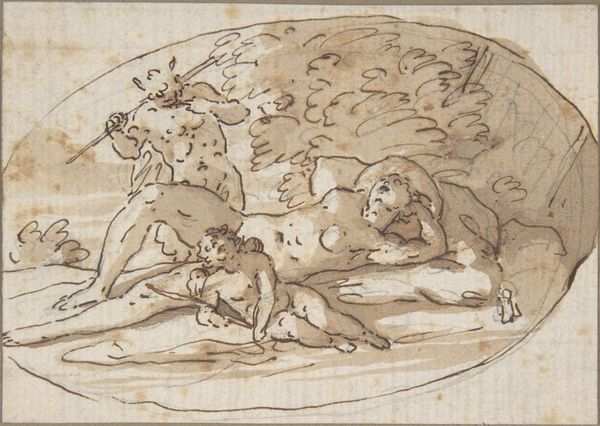
drawing
#
drawing
#
landscape
#
romanticism
#
genre-painting
Copyright: Public Domain
Curator: There's a palpable stillness to this drawing, isn't there? A sense of midday drowsiness captured in graphite. Editor: It evokes a sense of pastoral tranquility; everything seems to be at rest. But, I immediately wonder about labor relations, power dynamics—who is afforded such leisure and who isn't? Curator: Let's contextualize a bit. This is "Zwei schlafende Hirten, der linke in starker Verkürzung"—or "Two Sleeping Shepherds, the left one in strong foreshortening"— by Abraham van Strij. We're unfortunately missing date information, but it resides here at the Städel Museum. Editor: The sleeping figures themselves seem heavy, grounded, and utterly disconnected. Their pose contrasts with the alert dog that remains watching over them. Dogs often function symbolically as guards, reminders of responsibility. Curator: Absolutely. The visual vocabulary here hints at larger narratives concerning stewardship and vulnerability, especially in light of shifts from feudal arrangements and access to communal land. It invites examination through the lens of labor and social hierarchies. Editor: And the cows peacefully occupying the hilltop—they also are emblems of this particular vision of rural existence, right? Rooted in older understandings of Arcadia. Van Strij certainly imbues them with gentleness, not exploitation. Curator: Yes, animals were, and often are, representations of human needs and longings projected onto them. In this image, animals mirror our aspirations of harmony. This representation, however, simplifies the reality of rural experience where labor precarity existed. This invites viewers to engage in broader conversations regarding socio-political discourse in Dutch painting, which can speak to larger colonial power dynamics, global movement of human labor, and the development of economics Editor: Still, this depiction also suggests cyclical time, the quiet rhythms of pastoral life, but without sentimentality or romanticising the working class, or the labor relationship in our modern idea. . Curator: The strength of this genre piece is that it encourages nuanced reflection— it is not about being overly romantic about peasantry but seeing a specific form of rest and idleness represented that makes us consider who are allowed such time and if it is in fact labor in its essence that makes leisure all the more sweet. Editor: The way this work weaves symbols and draws the eye definitely captures complex ideas of labor and rest in an elegant composition.
Comments
No comments
Be the first to comment and join the conversation on the ultimate creative platform.
